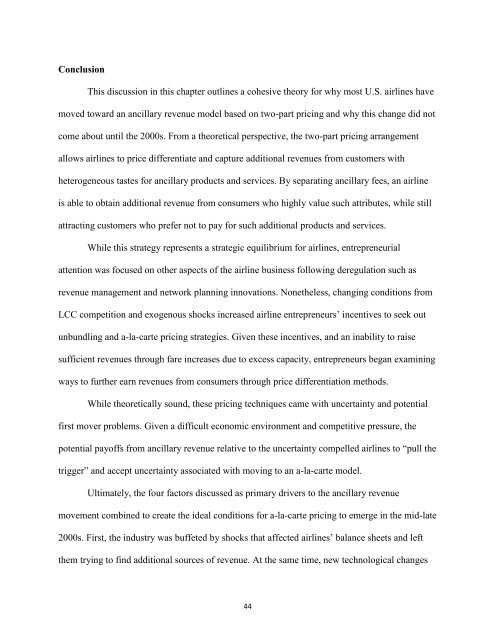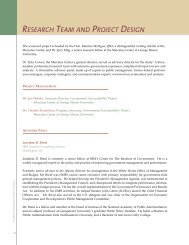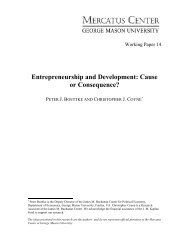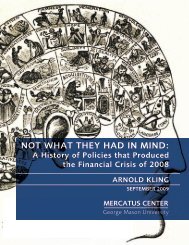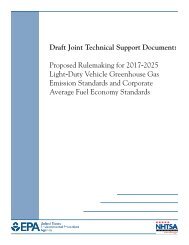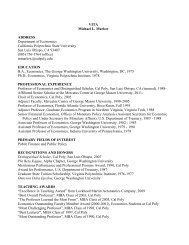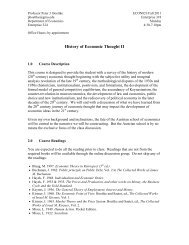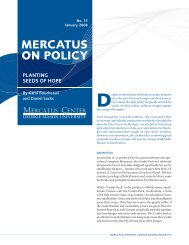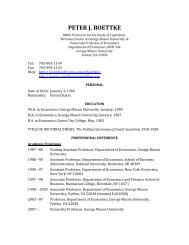A-La-Carte Pricing in the Airline Industry - Graduate Student ...
A-La-Carte Pricing in the Airline Industry - Graduate Student ...
A-La-Carte Pricing in the Airline Industry - Graduate Student ...
You also want an ePaper? Increase the reach of your titles
YUMPU automatically turns print PDFs into web optimized ePapers that Google loves.
ConclusionThis discussion <strong>in</strong> this chapter outl<strong>in</strong>es a cohesive <strong>the</strong>ory for why most U.S. airl<strong>in</strong>es havemoved toward an ancillary revenue model based on two-part pric<strong>in</strong>g and why this change did notcome about until <strong>the</strong> 2000s. From a <strong>the</strong>oretical perspective, <strong>the</strong> two-part pric<strong>in</strong>g arrangementallows airl<strong>in</strong>es to price differentiate and capture additional revenues from customers withheterogeneous tastes for ancillary products and services. By separat<strong>in</strong>g ancillary fees, an airl<strong>in</strong>eis able to obta<strong>in</strong> additional revenue from consumers who highly value such attributes, while stillattract<strong>in</strong>g customers who prefer not to pay for such additional products and services.While this strategy represents a strategic equilibrium for airl<strong>in</strong>es, entrepreneurialattention was focused on o<strong>the</strong>r aspects of <strong>the</strong> airl<strong>in</strong>e bus<strong>in</strong>ess follow<strong>in</strong>g deregulation such asrevenue management and network plann<strong>in</strong>g <strong>in</strong>novations. None<strong>the</strong>less, chang<strong>in</strong>g conditions fromLCC competition and exogenous shocks <strong>in</strong>creased airl<strong>in</strong>e entrepreneurs‘ <strong>in</strong>centives to seek outunbundl<strong>in</strong>g and a-la-carte pric<strong>in</strong>g strategies. Given <strong>the</strong>se <strong>in</strong>centives, and an <strong>in</strong>ability to raisesufficient revenues through fare <strong>in</strong>creases due to excess capacity, entrepreneurs began exam<strong>in</strong><strong>in</strong>gways to fur<strong>the</strong>r earn revenues from consumers through price differentiation methods.While <strong>the</strong>oretically sound, <strong>the</strong>se pric<strong>in</strong>g techniques came with uncerta<strong>in</strong>ty and potentialfirst mover problems. Given a difficult economic environment and competitive pressure, <strong>the</strong>potential payoffs from ancillary revenue relative to <strong>the</strong> uncerta<strong>in</strong>ty compelled airl<strong>in</strong>es to ―pull <strong>the</strong>trigger‖ and accept uncerta<strong>in</strong>ty associated with mov<strong>in</strong>g to an a-la-carte model.Ultimately, <strong>the</strong> four factors discussed as primary drivers to <strong>the</strong> ancillary revenuemovement comb<strong>in</strong>ed to create <strong>the</strong> ideal conditions for a-la-carte pric<strong>in</strong>g to emerge <strong>in</strong> <strong>the</strong> mid-late2000s. First, <strong>the</strong> <strong>in</strong>dustry was buffeted by shocks that affected airl<strong>in</strong>es‘ balance sheets and left<strong>the</strong>m try<strong>in</strong>g to f<strong>in</strong>d additional sources of revenue. At <strong>the</strong> same time, new technological changes44


